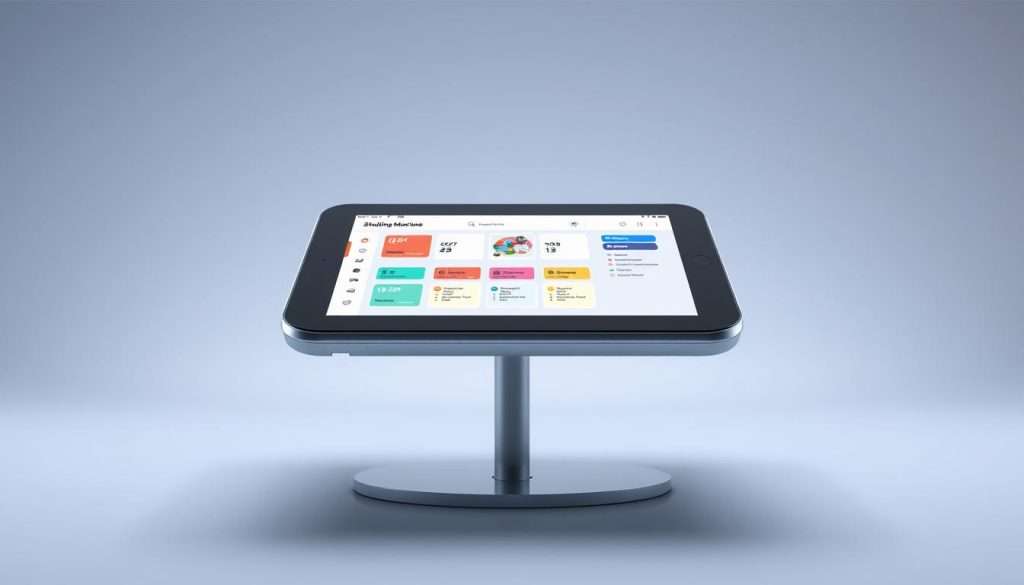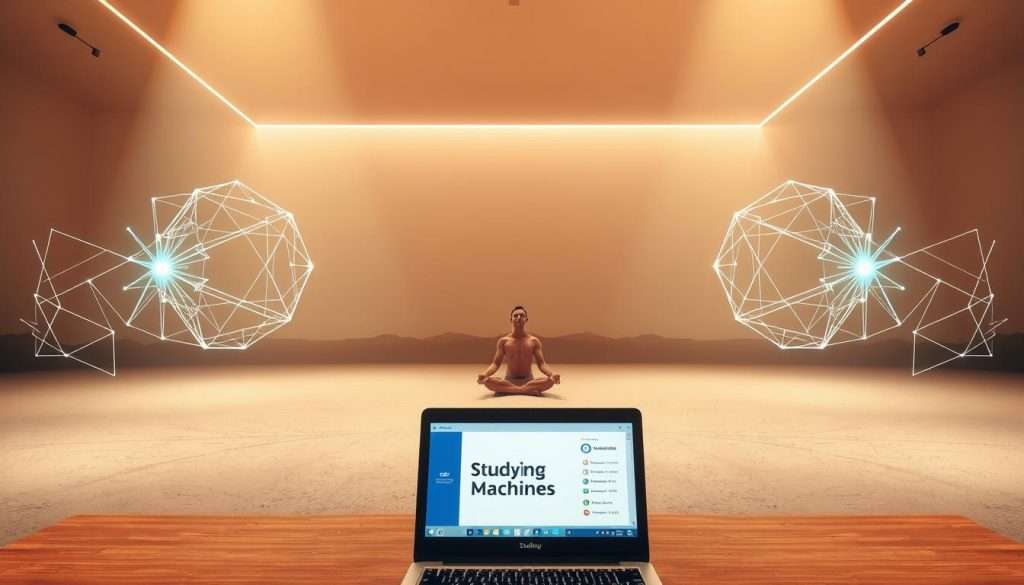Are you tired of cramming information into your brain, only to forget it moments later? Spaced repetition is here to change that! This scientifically proven method involves reviewing material at strategic intervals to boost retention and make learning stick.
By leveraging the spaced repetition technique, you can significantly improve your memory and reduce the likelihood of forgetting crucial information. We will explore how this method works and its benefits, helping you to learn more effectively.
Key Takeaways
- Spaced repetition is a scientifically proven learning method.
- It involves reviewing material at increasingly longer intervals.
- This technique improves memory retention and reduces forgetting.
- Spaced repetition can be applied to various subjects and learning materials.
- It’s an effective way to make learning a more enjoyable experience.
The Science Behind Spaced Repetition
Let’s explore the science behind spaced repetition. You might wonder why it’s so effective. The answer is in how our brains handle and keep information.
The Forgetting Curve Explained
The forgetting curve is a key idea in psychology. It shows how our memory fades over time. It’s a natural process, but spaced repetition fights it. By reviewing material at the right times, we keep it from being forgotten.
How Memory Consolidation Works
Memory consolidation turns short-term memories into long-term ones. Spaced repetition uses this by reviewing info just before we forget it. This strengthens our long-term memory.
“The key to improving memory is not to repeat information mindlessly, but to review it at the optimal moment.”
Research Evidence Supporting Spaced Learning
Many studies show spaced repetition works well. For example, a study on language learning found students who used spaced repetition remembered more vocabulary. This was compared to those who didn’t use it.
| Study | Method | Result |
|---|---|---|
| Language Learning Study | Spaced Repetition vs. Massed Repetition | 85% retention vs. 45% retention |
| Memory Consolidation Research | Optimal Review Intervals | Improved long-term memory |
Understanding spaced repetition’s science shows why it’s a great learning method. It’s not just about memorizing. It’s about using our brains’ natural ways to learn better.
What Makes Spaced Repetition So Effective
Spaced repetition works because it matches how our brains learn and remember. It’s not just about memorizing; it’s about really understanding and using what you’ve learned.
The Spacing Effect Phenomenon
The spacing effect shows that learning in bits over time helps us remember better than cramming all at once. This is key for keeping information in our long-term memory. That’s why spaced repetition is so helpful for learning.
Retrieval Practice Benefits
Retrieval practice is a big part of spaced repetition. It means actively trying to remember what you’ve learned. This makes your memory stronger and helps you understand better. When you test yourself, you’re not just passively reading or listening. You’re really working with the information.
Neurological Basis for Retention
Studies show that spaced repetition helps solidify memories in our brains. It makes sure we review at the right times to keep information fresh. This fits with how our brains naturally forget and remember, making it a smart way to learn.
By tapping into these benefits, learners can get the most out of spaced repetition. It leads to better memory and retention. This makes spaced repetition a great tool for anyone wanting to improve their learning.
Key Benefits of Spaced Repetition
Spaced repetition is a game-changer for learners, offering many benefits. It makes learning more effective. By using this technique, you can see big improvements in your studies.
Enhanced Long-Term Memory Retention
One key benefit of spaced repetition is better long-term memory. It helps you remember things for a long time. This is great for learning languages or historical dates.
Significant Time Efficiency in Learning
Spaced repetition also saves time. It helps you focus on what you’re about to forget. This way, you learn more efficiently without cramming.
Reduced Cognitive Overload
Another advantage of spaced repetition is less mental stress. It breaks down study into smaller parts. This makes learning easier and more effective.
Application Across Different Subjects
Spaced repetition works for many subjects. It’s useful for learning languages, science, or professional skills. You can use spaced repetition software or make your own flashcards.
Learning how to use spaced repetition well can make your studies more efficient. It leads to a more productive learning experience.
Getting Started with Spaced Repetition
Starting with spaced repetition is simple. First, break down your study material into smaller parts. Then, make effective flashcards and plan out your review schedule. We’ll show you how to do this right.
Selecting Appropriate Learning Material
The first step is to pick the right material. Choose the topics or subjects you want to learn. Use textbooks, online courses, or lecture notes as resources. Start with a clear goal in mind.
Creating Effective Flashcards
Flashcards are key to spaced repetition. Here’s how to make them effective:
- Keep the information brief.
- Use a clear question-answer format.
- Add images or diagrams when needed.
The Minimum Information Principle
Stick to the minimum information principle when making flashcards. Each card should have just enough info to remember the answer. Don’t add too much.
Question-Answer Format Best Practices
Use a consistent question-answer format. For example, the front can have a question or term, and the back the answer or definition. This makes recalling info easier and strengthens your learning.
Setting Up Your First Review Schedule
Now, set up your review schedule. Start with short intervals and increase them over time. A good starting point is:
| Review Day | Interval |
|---|---|
| Day 1 | Initial Learning |
| Day 2 | 1 day |
| Day 7 | 5 days |
| Day 14 | 7 days |
Following this schedule helps you use the spaced repetition technique well. It will improve your learning.
Step-by-Step Implementation Guide
Let’s explore how to use spaced repetition for learning. It involves breaking down material into chunks. Then, space them out and adjust based on how well you do. Finally, make it a part of your daily routine.
Day 1: Initial Learning and First Review
Begin by learning new stuff and reviewing it the same day. This first review helps lock the info in your memory. It uses the spaced repetition learning method.
Days 2-7: Following the Spacing Schedule
Next, keep reviewing the material at longer intervals. For example, review it on day 2, then day 4, and finally day 7. This schedule strengthens spaced repetition memory.
| Day | Review Material | Interval |
|---|---|---|
| 1 | Initial Learning | – |
| 2 | Review | 1 day |
| 4 | Review | 2 days |
| 7 | Review | 3 days |
Weeks 2-4: Extending the Intervals
As you get better, make the intervals longer. For example, review at the end of week 2, then week 4. This helps solidify the info further.
Month 2 and Beyond: Maintenance Reviews
After a month, keep reviewing to keep the info in your memory. Adjust the intervals based on how well you remember. This makes it easier to recall later.
By following this step-by-step implementation guide, you can make spaced repetition a part of your learning. It helps you keep information in your memory for a long time.
Top Spaced Repetition Software and Tools
Choosing the right tools for spaced repetition is key. The benefits of spaced repetition are clear. But, you need good software to get them.
Digital Flashcard Systems
Digital flashcard systems are essential for spaced repetition. They make it easy to create, review, and manage flashcards.
Anki: Features and Setup Guide
Anki is a favorite among learners for its flexibility and smart algorithm. To start with Anki, create decks for different subjects. Then, add cards with the info you want to learn. Anki’s algorithm helps you review at the best times.
Quizlet: Strengths and Limitations
Quizlet is popular for its study modes, including flashcards. It’s easy to use and has lots of content. But, its spaced repetition isn’t as flexible as Anki’s.

Mobile Apps for On-the-Go Learning
Mobile apps make spaced repetition easy to use anywhere, anytime.
SuperMemo: Algorithm Advantages
SuperMemo is known for its advanced algorithm. Its mobile app lets you keep learning across devices. This makes learning smooth.
Memrise and Duolingo: Gamified Approaches
Memrise and Duolingo use games to make learning fun. They might not be as customizable as others. But, their fun approach can really motivate you.
Using these spaced repetition software tools can greatly improve your learning. You’ll learn more efficiently and remember better.
Customizing Spaced Repetition for Different Learning Goals
Spaced repetition is great for all kinds of learners. It helps with learning new languages, studying for exams, or improving professional skills. You can adjust it to fit your needs.
Language Acquisition Strategies
Spaced repetition is especially good for learning languages. It helps with remembering vocabulary and grammar rules.
Vocabulary Building Techniques
Flashcards with new words and their meanings are very helpful. Spaced repetition software makes sure you review them at the right times. This helps you remember them for a long time.
Grammar Rule Retention
Grammar rules can be hard to remember. Flashcards or digital cards with examples can help. Regular review with spaced repetition makes these rules stick in your memory.
Medical and Scientific Knowledge
Medical students and professionals need to remember a lot. Spaced repetition helps with remembering medical terms, procedures, and diagnoses.
Flashcards or digital tools made for medical students are useful. They often have decks for different medical areas.
Academic Exam Preparation
Students getting ready for exams can really benefit from spaced repetition. Reviewing notes, textbooks, and past exams at longer intervals helps keep information in your mind.
Combining digital flashcard apps and spaced repetition software makes a good study plan. It helps you remember more and study less.
Professional Skills Development
Professionals can also use spaced repetition to learn new skills or improve existing ones. It works for learning software, understanding regulations, or developing leadership skills.
Customizing spaced repetition for your goals can lead to great results. It’s useful for students, professionals, and anyone who loves to learn. This method can make your learning experience better.
Measuring Progress and Optimizing Your Spaced Repetition System
To get the most out of spaced repetition, tracking your progress is key. You need to make adjustments as you go. This involves several strategies to improve your learning.
Tracking Retention Rates
Tracking how well you remember information is crucial. This shows where you need to focus more. It helps you see what you’re doing well and what needs work.
Adjusting Intervals Based on Performance
Changing the time between reviews is important. If you remember something easily, increase the interval. If it’s hard, make it shorter.

Using Analytics to Identify Problem Areas
Many spaced repetition tools offer analytics. These tools help find what you’re struggling with. You can then adjust your study plan to improve.
Setting Realistic Learning Goals
Setting goals that are within reach is vital. It keeps you motivated and moving forward. Achievable milestones help you stay on track.
To make your spaced repetition system better, try these tips:
- Regularly review and adjust your retention rates.
- Be flexible with your review intervals based on your performance.
- Utilize analytics to identify and address weak areas.
- Set realistic and achievable learning goals.
By using these strategies, you can make your spaced repetition system more effective. This leads to better and more enjoyable learning.
Overcoming Common Challenges in Spaced Repetition
Spaced repetition is a great way to learn, but it has its hurdles. You might face obstacles that slow you down.
Dealing with Difficult-to-Remember Material
Some things are tough to remember. To tackle this, break down complex info into smaller bits. Use mnemonics or connections to make it stick.
- Create mental images to link with the info.
- Use acronyms to recall key terms or ideas.
- Teach the material to someone else to solidify your grasp.
Maintaining Consistency and Motivation
Being consistent is crucial for spaced repetition. Set a regular review schedule and keep to it. To stay motivated, track your progress and celebrate your achievements.
Adjusting Schedules When Falling Behind
If you’re behind, don’t lose hope. Adjust your review intervals to fit your pace. Focus on getting back on track, not trying to catch up all at once.
Avoiding Common Pitfalls
Watch out for common mistakes like overreviewing or underreviewing. Use spaced repetition software to manage your reviews and boost your learning.
By tackling these challenges, you can fully benefit from spaced repetition. Enjoy better memory retention and more effective learning.
Conclusion: Making Spaced Repetition a Lifelong Learning Habit
We’ve looked into spaced repetition and its role in learning. It helps you remember things better and use your study time wisely.
Spaced repetition is not just a study trick. It’s a way to keep learning all your life. By adding it to your daily routine, you’ll learn more and enjoy it.
Keep using spaced repetition to stay consistent. Regular practice helps you remember new things and avoid forgetting. It’s a way to build a strong base for your future.
By making spaced repetition a habit, you’ll reach your learning goals faster and have fun doing it. So, start using it today and see how it changes your learning.

